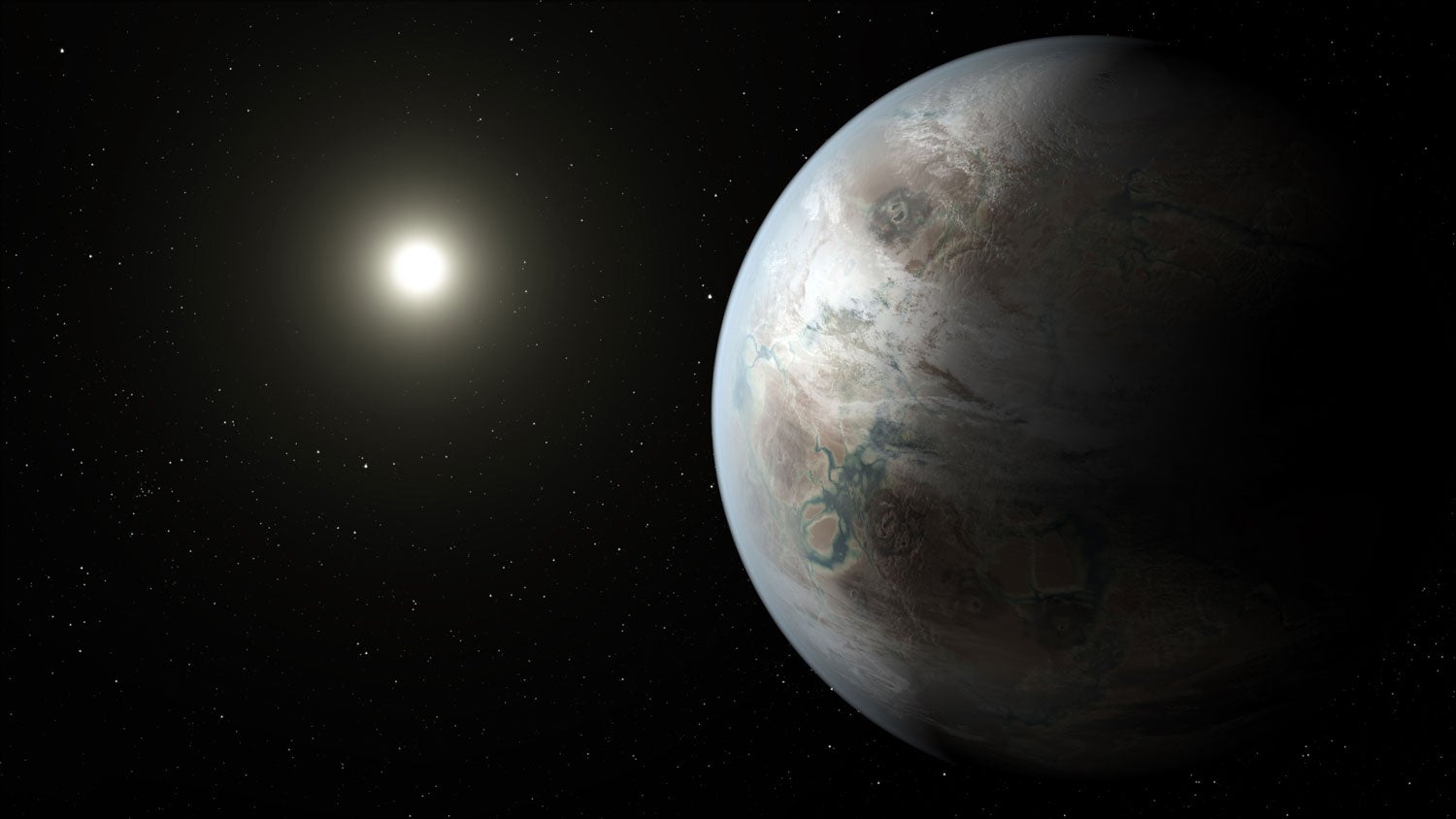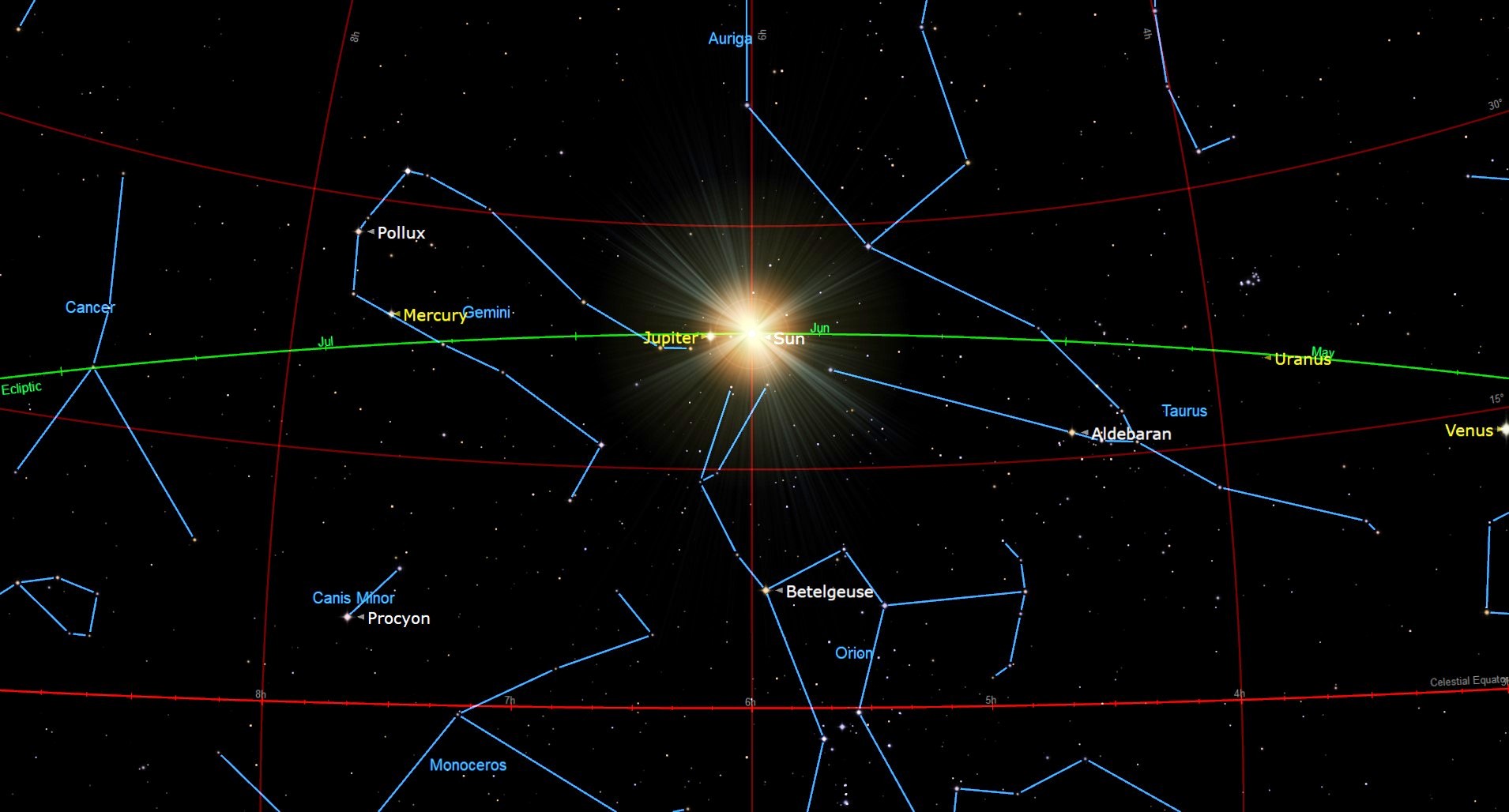
We now have a rough sketch of what the next decade could bring in astronomy and astrophysics.
Today (Nov. 4), the U.S. National Academies of Sciences, Engineering, and Medicine released a "decadal survey" laying out scientific priorities and funding recommendations for the next 10 years of astronomy and astrophysics research.
The document, called "Pathways to Discovery in Astronomy and Astrophysics for the 2020s," identifies three top-line items the disciplines should concentrate on: the discovery and study of habitable exoplanets, the exploration of black holes and neutron stars as windows to the early universe, and a better understanding of the origin and evolution of galaxies. It also stresses the importance of making astronomy a more inclusive and diverse field.
"This report sets an ambitious, inspirational and aspirational vision for the coming decade of astronomy and astrophysics," Fiona Harrison, co-chair of the National Academies' steering committee for the survey, said in a statement.
"In changing how we plan for the most ambitious strategic space projects, we can develop a broad portfolio of missions to pursue visionary goals, such as searching for life on planets orbiting stars in our galactic neighborhood — and at the same time exploit the richness of 21st-century astrophysics through a panchromatic fleet," added Harrison, who chairs the division of physics, mathematics and astronomy at the California Institute of Technology in Pasadena.
Related: The decade in astronomy: These space discoveries shaped the 2010s
An influential document
The National Academies prepares decadal surveys for a variety of fields, including planetary science and Earth science. As the name suggests, they come out every 10 years or so; the last astronomy and astrophysics decadal — "New Worlds, New Horizons in Astronomy and Astrophysics" — was released in 2010. (The new report was delayed by nearly a year by the coronavirus pandemic and a government shutdown; it was supposed to be released in January 2021.)
Breaking space news, the latest updates on rocket launches, skywatching events and more!
A lot of work goes into these documents, which are drawn up by prominent researchers in the fields that they cover. The newly released survey, for example, is 614 pages long.
"'Pathways to Discovery in Astronomy and Astrophysics for the 2020s' drew from the astronomical community through hundreds of white papers, town hall meetings and the advice of 13 sub-panels over several years to produce its recommendations," National Academies representatives wrote in the statement.
Decadal surveys are incredibly influential; government agencies such as NASA and the National Science Foundation (NSF) rely on them to decide how to allocate funding and other resources. For example, the 2001 astronomy and astrophysics decadal identified the Next Generation Space Telescope as the highest-priority mission to develop over the next 10 years. That ambitious observatory, now known as the James Webb Space Telescope, is scheduled to launch from French Guiana on Dec. 18.
In 2010, "New Worlds, New Horizons" flagged the Wide-Field Infrared Survey Telescope (WFIRST) and the Large Synoptic Survey Telescope (LSST) as especially important projects. And both are now progressing toward operation, though not without some drama. WFIRST, now known as the Nancy Grace Roman Space Telescope, is scheduled to lift off no later than May 2027, and the ground-based LSST, now called the Vera C. Rubin Observatory, will open its eyes in 2022 or 2023, if all goes according to plan.
Related: The Vera C. Rubin Observatory: New view of the universe
Three areas of focus, and a new 'Great Observatories' program
The newly released survey identifies three "priority areas" that should receive special attention and investment over the coming decade.
One, called "Pathways to Habitable Worlds," is a program designed to help discover and characterize Earth-like exoplanets, with the goal of eventually capturing photos of such worlds and analyzing their atmospheric composition.
The second, "New Windows on the Dynamic Universe," describes an intensified effort to study black holes and neutron stars with a diversity of instruments on the ground and in space, including gear that detects gravitational waves. Gaining a better understanding of these exotic, superdense objects could shed considerable light on the very early universe, the report's authors wrote.
The third focus area, "Unveiling the Drivers of Galaxy Growth," aims to revolutionize scientists' understanding of galaxy formation and evolution, "from the nature of the tenuous cosmic webs of gas that feed them, to the nature of how this gas condenses and drives the formation of stars," the decadal survey states.
To help achieve these and other ambitious goals, the survey recommends the establishment of a "Great Observatories Mission and Technology Maturation Program" — a callback to NASA's Great Observatories program, which launched four powerful space telescopes from 1990 to 2003, starting with the iconic Hubble Space Telescope.
The new Great Observatories effort "would provide significant early investments in the co-maturation of mission concepts and technologies, with appropriate decadal survey input on scope, and with checks and course corrections along the way," according to the new decadal.
The survey also recommends that this program's first mission should be an infrared/optical/ultraviolet (IR/O/UV) space telescope with a primary mirror about 19.7 feet (6 meters) across. That's about 2.5 times wider than Hubble's mirror and roughly the same size as that of Webb, which is optimized to view the cosmos in infrared light.
This envisioned space telescope could search for biosignatures in the atmospheres of about 25 potentially habitable exoplanets and be ready for launch in the early 2040s, the survey determined. And its mission could be mounted for about $11 billion, if all goes well — roughly the same price tag as Webb, whose total cost is about $10 billion.
Related: The 6 most Earth-like alien planets
The goals of this proposed IR/O/UV space telescope are broadly similar to those of two concept missions that NASA has been developing since 2016 — the Large Ultraviolet Optical Infrared Surveyor (LUVOIR) and the Habitable Exoplanet Observatory (HabEx).
There are two potential LUVOIR variants, which would boast primary mirrors 49.2 feet (15 m) and 26.2 feet (8 m) wide, respectively. HabEx's primary mirror would be 13 feet (4 m) across.
The IR/O/UV space telescope recommended by the decadal is a middle ground between those options: it would be more capable than HabEx and could be developed more quickly and cost-effectively than either LUVOIR version, according to the document.
Other Great Observatories would follow the new IR/O/UV space telescope in relatively quick succession, if the vision laid out in the new decadal comes true. Five years after work on that first scope gets underway, "the survey recommends commencing mission and technology maturation of both a far-IR and an X-ray large strategic mission, both scoped to have implementation costs in the $3 billion to $5 billion range," the new report states.
The decadal survey also recommends making key investments in huge ground-based telescopes — especially the Giant Magellan Telescope, which is currently being built in the Chilean Andes, and the Thirty Meter Telescope, which is slated to be constructed in Hawaii but has met with opposition in the state.
Such investments would ideally be made "as components of a coordinated U.S. Extremely Large Telescope Program (ELT) program," the survey states. "These observatories will create enormous opportunities for scientific progress over the coming decades and well beyond, and they will address nearly every important science question across all three priority science areas."
Making astronomy and astrophysics more inclusive
The decadal also stresses that more investment is needed to support research facilities, early-career scientists and important activities such as data archiving.
Both astronomy and astrophysics are male-dominated fields, with representation of minoritized groups lower than that of society at large — a situation that the new report would like to help change.
"Funding to support diverse faculty in university astronomy and astrophysics programs should be increased," the survey states.
"Among other steps, the report recommends NASA, NSF and the U.S. Department of Energy (DOE) ensure their policies treat harassment and discrimination as forms of scientific misconduct, and invest in workforce diversity at the division and directorate levels — as well as consider including the diversity of project teams and participants as a criterion when awarding funding," it adds. "NSF and NASA should implement funding for traineeship and postdoctoral fellowships to develop diverse and inclusive excellence."
Mike Wall is the author of "Out There" (Grand Central Publishing, 2018; illustrated by Karl Tate), a book about the search for alien life. Follow him on Twitter @michaeldwall. Follow us on Twitter @Spacedotcom or Facebook.
Join our Space Forums to keep talking space on the latest missions, night sky and more! And if you have a news tip, correction or comment, let us know at: community@space.com.

Michael Wall is a Senior Space Writer with Space.com and joined the team in 2010. He primarily covers exoplanets, spaceflight and military space, but has been known to dabble in the space art beat. His book about the search for alien life, "Out There," was published on Nov. 13, 2018. Before becoming a science writer, Michael worked as a herpetologist and wildlife biologist. He has a Ph.D. in evolutionary biology from the University of Sydney, Australia, a bachelor's degree from the University of Arizona, and a graduate certificate in science writing from the University of California, Santa Cruz. To find out what his latest project is, you can follow Michael on Twitter.
